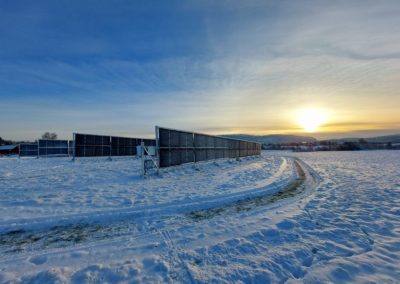Edge zones, pollinator strips and natural pastures are examples of good habitats for our insects. In recent years, Mære and Skjetlein have focused on what we can do to create more and better habitats for insects in particular and natural diversity in general. This will be an important investment for us as natural resource schools.
Scientists and biologists have for many years been concerned about the loss of biological diversity. There is a lot of attention around this topic and the importance of insects and other microbes for natural diversity and food production. Researcher Francisco Sanchez-Bayo says in Biological Conservation: "If the loss of insects is not stopped, the consequences will be catastrophic for the planet's ecosystems". We are losing important insects linked to water systems. Several species that have their habitats in forests have disappeared or are threatened. Many species and insects linked to cultural landscapes and grazing are also gone.
The loss of biodiversity and insects is mainly due to three factors:
• Intensive agriculture
• Urbanization and loss of habitat
• Global warming
To bring more focus to this topic, researchers have gone public to spread information about insects and biodiversity loss both online, through articles, publications and books. The website https://blogg.nmbu.no/insektokologene/ writes more about how insects live, how important they are to ecosystems and what we can do to take care of the various species.
In 2018, the government created a separate pollinator strategy to take care of living populations of wild bees and other pollinating insects in Norway. Agriculture can do a lot to contribute to more biological diversity and ensure threatened species and insects. We can take care of edge zones, arable islets, pastures and other extensive areas in the cultural landscape. Conservation and restoration of these important areas will be crucial to secure habitats for species and insects that are currently threatened.
Photo: Aina Bye

